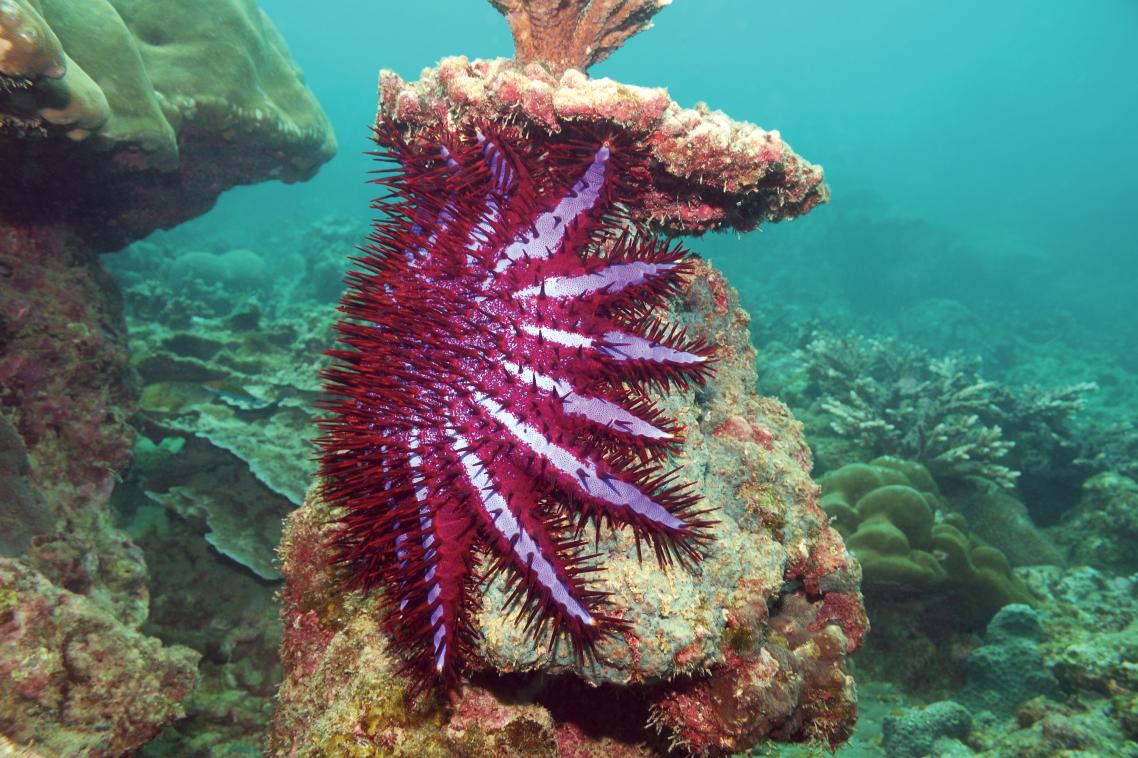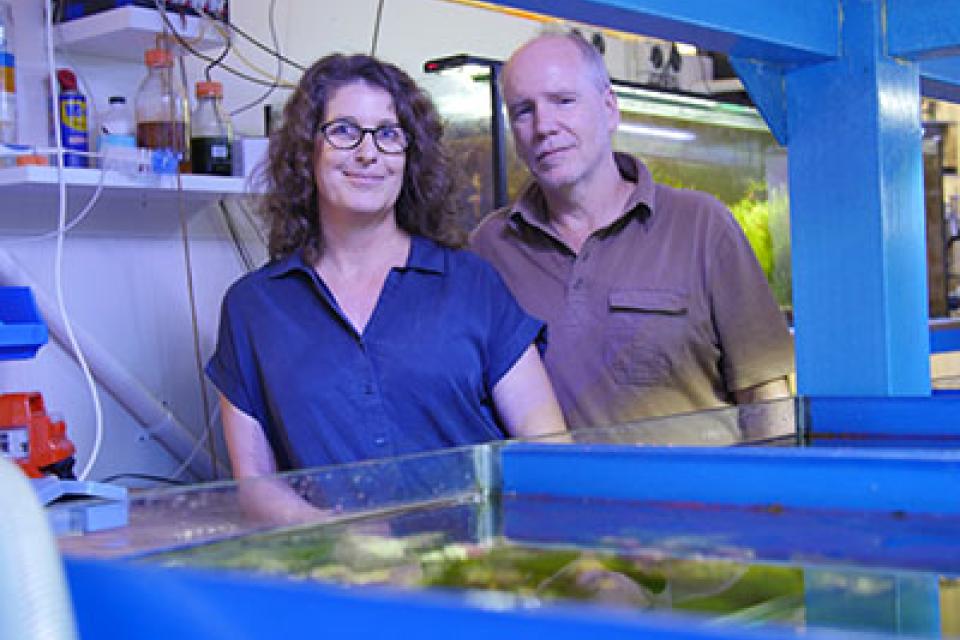Powers of attraction could decimate deadly starfish

An American who fell in love with both the Great Barrier Reef and his wife via The University of Queensland has led a breakthrough discovery that could protect one of the Seven Natural Wonders.
Husband-and-wife Professor Bernard Degnan and Associate Professor Sandie Degnan, believe they, along with research colleagues, can use the powers of attraction to decimate one of the reef’s fiercest enemies.
In esteemed journal Nature, the international research team has revealed crown-of-thorns starfish gather en masse due to a release of pheromones – a scent they’ve decoded so the prickly pests can be lured to their capture.
“For an already struggling Great Barrier Reef, and indeed any reefs across the Indo-Pacific region, these starfish pose an enormous threat due to the ability of a single female to produce up to 120 million offspring in one spawning season,” Professor Bernard Degnan said.
“They feast on the coral and leave it bleached white and vulnerable to destruction in heavy storms.
“Millions of dollars have been spent over many years on a variety of ways to capture crown-of-thorns starfish, whether it be via diver collection, injections or robotics.
“Now we’ve found the genes the starfish use to communicate, we can begin fabricating environmentally safe baits that trick them into gathering in one place, making it easier to remove reproductively-primed animals.”

The painstaking process of sequencing the crown-of-thorns genome and its pheromones was completed 30 years after Professor Degnan moved from his hometown of New York to Brisbane to study as one of UQ’s first international exchange students.
A graduate in Marine Biology and Molecular Biology, Professor Degnan developed an early fascination with the biodiversity of Queensland’s Great Barrier Reef in his formative years, and while at UQ’s Heron Island Research Station he met his future wife.
“I guess there is a nice story there about the reef bringing us together and now we’re working hard to develop novel ways to understand and preserve it,” Professor Bernard Degnan said.
“But beyond us, there’s personal history with some of the other researchers, like Mike Hall at AIMS who is one of our oldest colleagues and who came up with the original genome concept.
“Nori Satoh at OIST could be considered the grandfather of marine genomics and has been a very supportive friend, as has Scott Cummins of USC, who was a former research fellow in my lab.
“What I like most is that we’re finding a solution to a problem, not merely documenting it.”
Beyond the role their genomics breakthrough brings to controlling the crown-of-thorns, the Degnans believe it could have other environmental and economical benefits.
They say a similar approach could be used to combat invasions of sea snails and other marine pests throughout the world.
For fishermen and coastal communities, that’s a win on several fronts.
“I expect for local economies there could be some positive cash flow from the fishermen that collect and remove the crown-of-thorns,” Professor Bernard Degnan said.
“Furthermore, as the reef becomes healthier, the benefits to a raft of industries from tourism to fisheries quickly follow.”
The crown-of-thorns research is available in full via the Nature journal.
An edited short-length video, with starfish overlay footage, is available here.
The raw extended interviews with the researchers are available here.
Media: Professor Bernard Degnan, b.degnan@uq.edu.au, +61 7 3365 2467; UQ Communications - Robert Burgin r.burgin@uq.edu.au, +61 448 410 364.
Related articles
From cane toad lures to drugs from deadly venoms: IMB is a global research powerhouse

New pesticide tool reduces downstream impacts of chemical runoff
Media contact
UQ Communications
communications@uq.edu.au
+61 429 056 139
